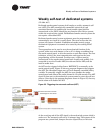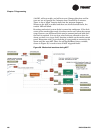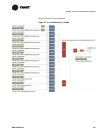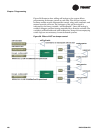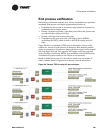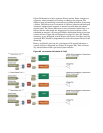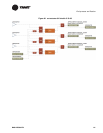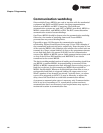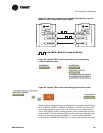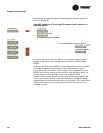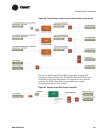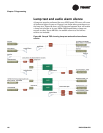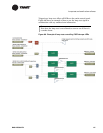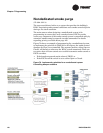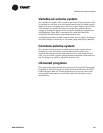
Chapter 7 Programming
112 BAS-APG001-EN
Communication watchdog
Since multiple Tracer MP581s are used to interface with the mechanical
equipment and FACP and FSCS panels, checking communications
between each MP581 and BCU is necessary. Three different
communication systems are used: BCU to MP581 (auto-bind), MP581 to
MP581 (custom bind), and MP581 to EX2. The BCU cannot determine
communication status of custom bindings.
One Tracer MP581 should be chosen to be the communication watchdog.
Otherwise, the number of watchdog timers and Tracer MP581
permutations may exceed binding limits.
Figure 62 on page 113 illustrates the communication watchdog
relationship. Figure 63 and Figure 64 on page 113 are TGP examples of
the transmitting and receiving units, respectively. From the point of view
of the receiving MP581, this technique tests whether the central unit can
transmit by u sing a custom binding. As long as the programmer chooses
to test from both ends, this process will fully test the communication
status of the MP581-to-MP581 system. Other communication status such
as that of the I/O bus (EX2 modules) and BMTX BCU can also be
transferred to the central MP581.
The basic watchdog method consists of sending an alternating signal from
one MP581 to another MP581. A custom binding is necessary for the
MP581-to-MP581 communication link. Although there are many ways to
bind the two devices, for this example use MP581-2/nvoswitch36 to
MP581-1/nviSwitch38. Whenever nviSwitch38 goes from false to true, a
retriggerable latch block is triggered, holding its output state to true
When a number of stat changes are missed—typically three—an alarm
event will be triggered at the BCU. It may be necessary to adjust the
delay time of the latch block to avoid false communication alarms.
A response to communication status is necessary only if communication
fails at any level. According to UL, a mechanical system reaction to
communication loss is not necessary. Local requirements may require a
mechanical reaction to communication loss.




